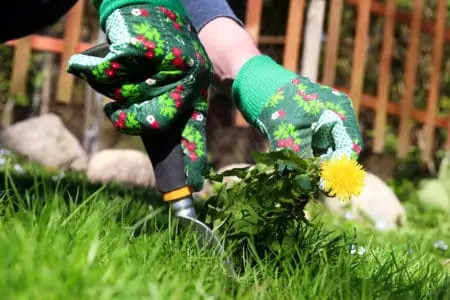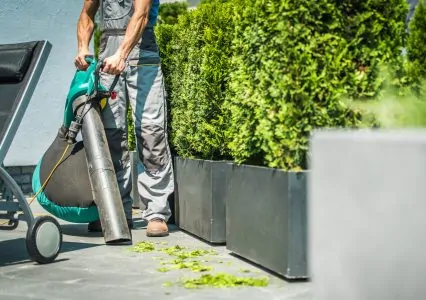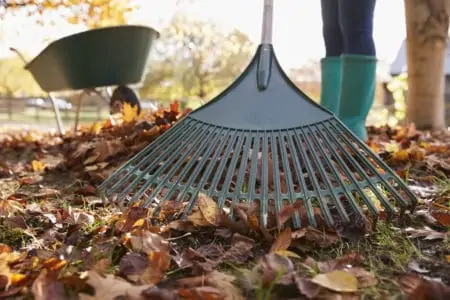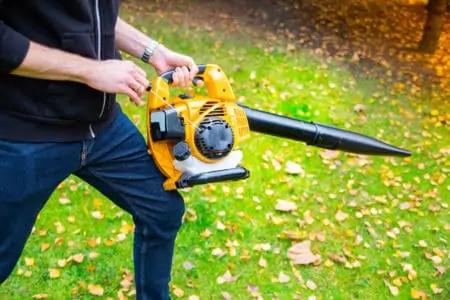Weeds can both harm and help out your plants. They can protect and fertilize the soil, as well as attracting helpful insects. But they can also steal important nutrients from your plants, invite the wrong kind of parasites and take up vital space that your plants need to grow.
But this all depends on what type of weeds we’re talking about. We’ve put together a handy list of 25 common types of weeds to let you know where they’re likely to grow, what they do, whether they’re harmful, and how to control each weed.
Now you can better identify what weeds are growing in your garden and exactly what you should do about it.
Key Takeaways
- Identify weeds: Learn to recognize 25 common types of weeds, such as bindweed, dandelion, and poison sumac.
- Control methods: Use techniques like hand-pulling, mulching, or applying weed killer to manage unwanted plants.
- Consider benefits: Some weeds, like daisies and white clover, may provide benefits to your garden and the environment.
- Stay persistent: Regularly monitor your garden and act quickly to prevent weeds from taking over your outdoor space.
Type of Weeds
Below are 25 common types of weeds with a bunch of insightful information to help you identify the weed and control it if necessary.
1. Bindweed
- Botanical Name: Calystegia sepium or convolvulus arvensis
- Height: Up to 6.5 feet (1)
- Classification: Perennial
- Toxic: Yes
Bindweed looks pretty with its trumpet-shaped flower heads and its ability to twine itself around plant stems. But these weeds smother other plants and are difficult to remove.
Because the roots reach deeply into the ground, bindweed can stick around for years at a time. It tends to flourish in late spring and summer as it spreads frantically in warmer weather, but it can grow in all types of soil.
To remove bindweed, you should get in there early before it’s out of control. If the buds are already formed, then try applying a weed killer to the foliage throughout the weed.
2. Dandelion
- Botanical Name: Taraxacum officinale
- Height: Up to 18 inches (2)
- Classification: Perennial
- Toxic: Only in large amounts
Dandelions are one of the most common types of garden weeds, going from a beautiful yellow flower to a fluffy plant. They are important for bees in the early parts of the year and generally won’t do harm to your garden.
However, if you do want to remove them, they might just grow back pretty soon since the seeds are dispersed by the wind. A neighbor’s dandelion might plant itself in your garden and appear next year!
Using a mulcher is one of the easiest and most effective ways to control dandelion growth in your yard. Dandelions can grow almost anywhere, whether there’s sun or shade, so look out for them.
3. Poison Sumac
- Botanical Name: Toxicodendron vernix
- Height: Up to 20 feet (3)
- Classification: Perennial
- Toxic: Only in large amounts
Poison sumac is a shrub or small tree that typically grows in swampy areas. You’ll find it near cinnamon ferns and cattails. It’s similar to poison ivy in that every part of it is poisonous and may cause rashes, but it doesn’t trail on the ground or climb up trees.
It can also be found in other wet areas like pinewood and hardwood forests. Some noticeable ways to identify it are by its reddish stems, long leaflets in a v-shape, yellow-green clustered flowers, and more (4).
Don’t be fooled by the white berries and beautiful autumnal foliage — it’s still a dangerous plant.
4. Chickweed
- Botanical Name: Stellaria media L. or Alsine media
- Height: 1.9 to 20 inches (5)
- Classification: Annual
- Toxic: Yes
Chickweed is an annual winter plant that spreads quickly and has a super long root system. It is probably one of the most common garden weeds. You’ll know it by its short height and small white flowers.
It thrives in cool, wet areas and can grow quickly in a range of soils, particularly pH-neutral soil. It’s a nuisance to control because it can produce hundreds of seeds and take years and years to eradicate from your garden. In fact, chickweed can get out of control before you know it.
The main issue with chickweed is that it can bring damaging viruses to your crop plants, infecting them and burying them deep down into the soil.
5. Green Alkanet
- Botanical Name: Pentaglottis sempervirens
- Height: 12 to 23 inches (6)
- Classification: Perennial
- Toxic: No
It may look pretty, but in damp shady yards, it quickly becomes a weed, pollinated by bees. It tends to be more common in Southwest Europe, in alkaline soils, or in gardens with wood and grassy areas. The big issue is that it self-seeds and regenerates, causing it to grow like crazy.
It has a deep perennial taproot that arises close to the parent plants, which can affect growth. The best way to remove Green Alkanet is by digging deep down to the roots and hand weeding off seedlings. Then apply a mulching film to prevent germination of seedlings.
6. Oxalis
- Botanical Name: Oxalis corniculata
- Height: Up to 20 inches (7)
- Classification: Perennial
- Toxic: Only in large amounts
Oxalis looks a bit like clovers but with little yellow flowers. Some gardeners purposely grow it as a ground cover, but for most people, this is a persistent and annoying plant. It can be found all over the world and tends to grow in landscape, gardens, and lawns, no matter if there is shade or sun.
It’s hard to manage Oxalis because it is stubborn and comes from a central point. The best way to control it is to mulch the area in the springtime. This prevents growth throughout the spring, summer, and autumn.
Fun Fact
These plants are edible in small amounts, but you may not enjoy the sour taste. Plus, if you’ve treated the area with a pesticide, do not eat it.
7. Quackgrass
- Botanical Name: Elytrigia Repens
- Height: Up to 4 feet (8)
- Classification: Perennial
- Toxic: No
Quackgrass is a persistent grass that produces seeds. It grows in landscape and garden areas in the sun or shade. It looks like flower spikes, with long straw-colored rhizomes that create a heavy mat in the soil to create room for new shoots.
If you’re trying to get rid of quackgrass, dig out the grass as soon as you notice it, including the roots. You can also mulch it. When disposing of it, we don’t recommend putting it in the compost pile as even there, it can still grow!
8. Daisy
- Botanical Name: Bellis perennis
- Height: Up to 2 feet (9)
- Classification: Perennial
- Toxic: Toxic to children
Daisies are technically weeds, too, although they are very cute flowers. They’re very common in yards and gardens, but they can get in the way a bit. If you’re looking to get rid of weeds, you can burn them using vinegar. Just spray them with vinegar and the acidity will burn them off.
You can also dig the daisies out or use a knife once a week to cut through the foliage. Otherwise, you can try mowing the lawn and getting rid of the daisies that way.
In general, though, they aren’t harmful to other plants. They just grow quickly and widely.
9. Japanese Knot Weed
- Botanical Name: Polygonum cuspidatum
- Height: Up to 7 feet (10)
- Classification: Perennial
- Toxic: No
Japanese knotweed is a fast-growing weed. It has a fleecy appearance in autumn. Despite the non-threatening appearance, it’s a tenacious weed.
In the winter, it dies to ground level but in the early summer, the bamboo-like stems shoot up to seven feet tall. This can inhibit other plant growth, so you really don’t want this around your plants. The main areas it can be found are in borders, paving, beds and waysides.
To get rid of it, you will need to contact a specialist Japanese knotweed contractor since there may be some laws around disposing of it in your local area.
10. Canada Thistle
- Botanical Name: Cirsium arvense
- Height: Up to 4 feet (11)
- Classification: Perennial
- Toxic: Yes
Despite its name, this weed can be found in the US, too. It is very widespread in ecological areas but not as common in the southern states. It’s considered an invasive plant and badly affects natural resources. Unfortunately, it can thrive in a variety of environments, including both wet and drylands, such as fields but also wet meadows.
These plants reseed and spread through the roots, so they are fast-growing and very resilient. To remove them, you have to use a combination of digging and herbicides. Warning: it can take a while.
11. Crabgrass
- Botanical Name: Digitaria Spp
- Height: Up to 2 feet (12)
- Classification: Annual
- Toxic: No
Crabgrass is a summer weed that grows low to the ground, but it can grow up to two feet tall if you don’t mow it. It thrives in dry and hot weather and will typically die at the end of the growing season or at the first frost.
It can be found in gardens and yards, in both sunny and shady areas. To control it, we recommend mulching the lawn or using a pre-emergent herbicide. You can also pull the crabgrass up by hand. The bottom line is that crabgrass spreads quickly, so you want to stay on top of it.
12. Nutsedge
- Botanical Name: Cyperus SSP
- Height: Up to 3 feet (13)
- Classification: Perennial
- Toxic: No
Nutsedge looks very much like grass, but it’s thicker, stiffer, and has a v-shape to it. They are persistent weeds that are found in gardens, lawns, and home landscapes. The big issue with these weeds is that they prevent good harvest growth.
When it comes to getting rid of it, keep in mind that this is a long and difficult process due to the aggressive nature of nutsedge. The best way to control it is to employ both cultural and chemical processes. Once this is done, you must prevent new growth immediately otherwise, it will grow out of control again.
13. Creeping Speedwell
- Botanical Name: Veronica filiformis
- Height: 1-2 inches (14)
- Classification: Perennial
- Toxic: No
Creeping speedwell is a common lawn weed that is low-growing with small blue or purple flowers. It forms a dense coverage on lawns throughout April and July. While some people plant it on purpose, for others, it can be a nuisance for other growth they’re trying to create.
To control it, it’s important to keep a healthy lawn since this will prevent the speedwell from flourishing. If you have speedwell, cultivate the soil to get rid of it. You can also mulch the soil to get rid of speedwell build-up, too.
14. Plantain Plants
- Botanical Name: Plantago Major
- Height: Up to 16 inches (15)
- Classification: Perennial
- Toxic: No
Here’s a weed you may not want to kill. It was brought over from Europe for medicinal purposes (16). It can be used as a supplement, a skincare product, or even as tea. It has a range of health benefits, including healing wounds, reducing inflammation, and improved digestion.
If you find it in your yard, you can rinse the fresh leaves and eat them, either raw or cooked. Many people use them in cooked dishes like stir-fries and soups. You can even infuse them in oil to use as skincare, like lip balms and lotions.
Warning
Do not eat plantain plants if you have previously treated it with pesticides.
15. Common Ragweed
- Botanical Name: Ambrosia artemisiifolia
- Height: Up to 3 feet (17)
- Classification: Annual
- Toxic: No, but it can trigger allergies
If you have hay fever, you might have a personal vendetta against this weed. In the spring and summer, this ragweed spreads through the atmosphere and heightens allergies. If you find it in your yard, you’ll want to get someone to remove it as soon as possible.
To identify it, look for a feathery leafed weed with clusters of small yellow flowers. It grows quite tall — up to three feet — and likes to be in shade or sun.
It can be removed with a broadleaf herbicide and frequent mowing so that it can’t grow up and flower again.
16. White Clover
- Botanical Name: Trifolium repens
- Height: 6-12 inches (18)
- Classification: Perennial
- Toxic: No
White clover is a common weed found in gardens and yards, both in sunny and shady spots. It has three leaves framed around white floral clusters. It has a few notable benefits. Firstly, it’s helpful to bees. But it’s also good for the growth of your foliage since it can fix nitrogen within the soil.
However, if you do want to get rid of it or control it, mulch over it or use a post-emergence herbicide. Alternatively, you can hand-pull the white clovers up. In our opinion though, it’s not something you’d necessarily want to remove since it does more good than damage.
17. Buckhorn Plantain
- Botanical Name: Plantago Lanceolata
- Height: 3 inches and 2.5 feet (19)
- Classification: Perennial
- Toxic: No
Buckhorn plantain, also referred to as English plantain, is a common weed found in pastures, lawns, and meadows. It likes to grow in agricultural and disturbed areas. It is known to reduce harvest yield, and so many people want it gone.
To remove it, it’s best to pull it up while the plants are still young. It’s also smart to destroy the plants before they begin to seed. If this isn’t possible, then there are some herbicides that will kill off buckhorn plantain. You should spray them in the autumn time, from late October to early December.
Did You Know
Buckhorn plantain is actually edible, so you can also remove it by eating it! You can eat it raw, boiled, steamed, or sauteed.
18. Broad-Leaved Dock
- Botanical Name: Rumex obtusifolius
- Height: Up to 5 feet (20)
- Classification: Perennial
- Toxic: No, but they may harm chickens
Broad-leaved docks are tall with long broad leaves. They sometimes flower in whorls, which can become red. You tend to find them in bare and disturbed grounds alongside stinging nettles. If you crush up the docks and apply them to your sting, they can relieve the pain and itching.
If you do have nettles, you won’t want to remove the docks until the nettles have been removed since they are helpful natural healers. But once you’ve removed the nettles, you can mulch to remove the dock leaves. Otherwise, you can pull and dig up the plants.
19. Ground Ivy
- Botanical Name: Glechoma hederacea
- Height: 12-20 inches (21)
- Classification: Perennial
- Toxic: May be toxic to livestock
Ground ivy, also known as Creeping Charlie, is a pretty weed with nice florals and a pretty scent. However, it’s not always desirable. It creates a sort of carpet over shrubs and grass, which prevents adequate sunlight from getting in.
To remove, pull the ivy out by hand after a rainfall when the ground is looser. Tug gently to pull up the entire vine. If you leave anything behind, it can grow back.
Before you do this though, note the benefits of ground ivy. It can be used to ease certain health issues, including coughs, arthritis, bladder infections, and more (22).
20. Foxtail
- Botanical Name: Alopecurus
- Height: 1 to 3 feet (23)
- Classification: Annual
- Toxic: Toxic to dogs
Foxtail is an annual grass that slightly resembles a fox’s tail due to the fluffy seed head. It grows quickly in both moist and dry soil. There are different types of foxtail: yellow, green, and giant. You’ll find them in ditches, roadsides, building sites, and anywhere else where the natural ground has been disturbed.
To remove, use a pre-emergent herbicide in the springtime before it starts to flourish. Keep your yard healthy, and it shouldn’t be an issue.
One of the big issues with foxtail is that it is toxic to dogs. It can lead to infection or even death if left untreated (24).
21. Lamb’s Quarter
- Botanical Name: Chenopodium Album
- Height: Up to 5 feet (25)
- Classification: Annual
- Toxic: Toxic to sheep
Lamb’s Quarter is very common in gardens and yards, especially across the northern half of the US and southern Canada. It typically affects vegetable and pulse crops, as well as sugar beets because it grows so widely.
However, it does have some good uses, too. It can be used for medicinal purposes, but it can also be eaten, similarly to spinach (26).
If you’d like to remove it, mulch over the lamb’s quarter or pull the weeds up by hand. You can also cultivate the soil where it’s rooted with a sharp garden hoe.
22. Purslane
- Botanical Name: Portulaca oleracea
- Height: 3-9 inches (27)
- Classification: Annual
- Toxic: Toxic to cats
Purslane is an edible weed with a range of health benefits. It’s high in Omega-3 fatty acids, it’s used in traditional medicine, and it’s high in a range of vitamins, including Vitamin A, C, and more (28).
But it’s not all good news. This plant can produce up to 240,000 seeds per plant, meaning it can reproduce very aggressively, making it tough to control (29). You may spend a day eliminating it only to find it’s regrowing already the next day.
Prevention is easiest with purslane, but if it’s already there, pull it out and destroy the plant. Mulching can help, too.
23. Groundsel
- Botanical Name: Senecio vulgaris
- Height: Up to 2 feet (30)
- Classification: Annual
- Toxic: Yes
Groundsel is a common problem weed. You’ll find it in gardens, nurseries, and other cultivated crops. The main issue is how toxic it is. Not just to humans but to livestock, too. It can cause irreversible liver damage and even death (31).
To remove groundsel, you can employ tillage in the fall and springtime. You can also use biological control through the larvae of the cinnabar moth, which eats groundsel. Lastly, you can use a herbicide to get rid of groundsel.
24. Stinging Nettle
- Botanical Name: Urtica dioica
- Height: Up to 2 feet (32)
- Classification: Annual
- Toxic: Yes
Stinging nettle can be a very annoying weed to have around. If you brush against a stinging nettle, it hurts.
However, it has some important benefits, too. It contains a range of important nutrients, it can reduce inflammation, treat hay fever, and much more (33).
You can ingest it by making a tea or cooking it into a soup, stew, or stir fry.
However, if you want to remove these weeds, wear gloves and remove the weeds by hand. You can also mow or weed whack to prevent further growth.
Watch Out
Do not eat fresh stinging nettle leaves, as this can irritate the inside of your mouth.
25. Dayflower
- Botanical Name: Commelina
- Height: 1 to 3 feet (34)
- Classification: Annual
- Toxic: No
A dayflower is an annual grass weed that grows in both sunny and shady areas. They have a dark green stem and bright blue flowers in the summertime. They attract birds which can be a benefit to some people and an annoyance to others.
To remove dayflower, mulch the garden to prevent the weeds from growing. You can also use a pre-emergence herbicide in the springtime to prevent growth.
How to Prevent Weeds from Taking Over
As evident, there are many types of weeds. Some have lots of fun benefits, while others are a hindrance. If you’re looking to limit them from overtaking your yard, here are some top tips:
- Mulch: Mulch is a big way to remove leaves, as found in our list. Mulching can control weed growth since it keeps the soil cool and prevents the weeds from lots of light. If you use organic mulch, you can attract the right kind of insects that will feed on weed seeds and get rid of them for you.
- Cultivate carefully: When cultivating, make sure to do it carefully. When you cultivate, you may move dormant seeds to the top of the soil, which encourages growth. Only cultivate when absolutely necessary.
- Plant cover crops: Cover crops, such as clover, barley, and wheat, are a great way to block weeds from growing out of control. They spread easily and take up space where weeds would like to be.
- Weed at the right time: You should aim to pull weeds up when the soil is wet, after a big rainfall, or watering the area. This is much more effective as the roots slide up easier, making weeding a breeze rather than a tough chore.
- Off with their heads: If you can’t remove the root of the weeds, the next best thing you can do is chop off their heads. This buys you a bit of time before the weed seed rain begins. This is especially useful with perennial weeds as it can limit their spread.
- Try pre-emergent: Pre-emergent herbicides are very handy to stop weed seeds from germinating. It’s best to use this in the early spring or after cultivating so the weeds are less likely to grow back at the same rate.
- Trim garden edges: It’s important to keep the garden edges mowed to prevent weeds from growing out of control. You may need to use a trimmer as lawn mowers aren’t always good at getting around yard edges.












